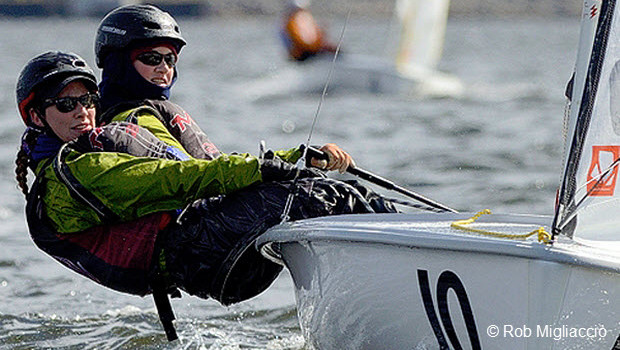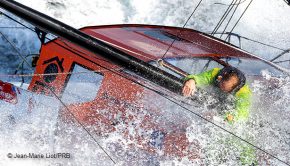Head Injuries: Leadership Needed to Keep Sailing Safe
Published on August 3rd, 2015
Addressing the risk of head trauma in sailing, MIT Sailing Master Franny Charles has taken steps to minimize the threat…
Hockey, skiing, bicycling all went through the ‘wake-up moment’ years ago, and our sport is also beginning to become more aware of the debilitating effects head injury has on the brain.
Leadership to actually make this change happen is the key ingredient which is missing. Boats can be redesigned to have the boom higher. Booms can easily be made dramatically lighter. And either the boom can be padded or the head can be protected or, both, to reduce the likelihood of someone sustaining an injury to their brain.
At MIT we recognized that head injuries were the single most frequent injury which our sailing team members were seeking medical attention for. Not only were our injured sailors falling behind on their school work, but we had a few sailors who actually had to withdraw from MIT entirely because of chronic pain and headaches as a result of their injuries.
However, head injury statistics have changed dramatically since we took action to reduce the risk to our competitive sailors, as well as recreational sailors. With over 3000 students who sail actively at MIT every year, a decision was made to do as much as we could to make the sport safer.
Our existing racing fleet of FJs were retrofitted with carbon booms and our new boats were ordered with the rig 4-inch taller so the ‘baseball bat’ boom would be less likely to hit sailors. The Tech Dinghy sailplan now has a dramatically shorter leech which makes things much less painful for our novice sailors to develop a love and passion for the game. Also, every sailor wears a helmet when sailing a dinghy.
Head injuries haven’t occurred since we implemented this change. MIT is not sure of what helmet is the right helmet, but we do know that there are many more fun ways to kill brain cells than to get hit by a piece of aluminum.
At our college regattas, and we host more days of competition than any other university, we do not require visiting sailors to wear helmets. However, our high school regattas and recreational regattas, like the Charles River Open Team Race, do require all participants to wear a helmet of their own choice.
At MIT we looked at the problem of head injuries as something which needed multi-pronged solutions. One layer of protection is not going to eliminate the problems. Boat designers, class leadership, organizational officers should all begin to collaborate on how to make sailing safer. Discussion is not enough.
Immediate action should be taken now. Are you the one to help make sailing safer for your friends, sailing team, and youth? Let’s all exhibit some common sense and keep sailing as something to enjoy.









 We’ll keep your information safe.
We’ll keep your information safe.